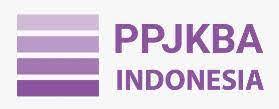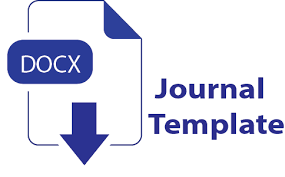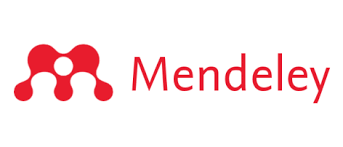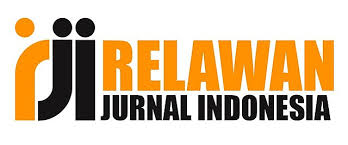The Contributions of Prominent Lexicographers to the Development of Arabic–Arabic Dictionaries
DOI:
https://doi.org/10.58223/al-irfan.v8i1.430Keywords:
Contributions, Lexicographers, Arabic DictionaryAbstract
his research investigates the contribution of lexicographers in the development of Arabic-Arabic dictionaries through significant classical works. The main problem addressed is the lack of comprehensive studies that highlight the role of lexicographers in shaping the structure, methodology, and sustainability of Arabic lexicography. The purpose of this study is to examine how their works contributed to the compilation, development, and preservation of the Arabic language across different periods. The study focuses on prominent figures such as Al-Khalil ibn Ahmad with Kitab al-‘Ayn, Fairuzabadi with Al-Qamus al-Muhit, and Ibn Manzur with Lisan al-Arab. Employing a qualitative approach with library research as its primary method, this research collects data from classical dictionaries, relevant scholarly books, and academic articles. This approach enables an in-depth analysis of lexicographers’ contributions in terms of methodology, systematization, and linguistic enrichment. The findings reveal that these lexicographers not only pioneered the organization of Arabic lexicons but also provided foundational systems that influenced subsequent dictionary compilers. Their methods, although varied, maintained rigorous analysis of meanings and usages, thereby establishing a strong tradition in Arabic lexicography. The contribution of their works lies not only in enriching Arabic vocabulary but also in preserving the language as a cultural and intellectual heritage. This study contributes to a better understanding of the historical and linguistic significance of Arabic-Arabic dictionaries.
References
Ab Hadi, Amin Al-Hadi, dan Firuz-akhtar Lubis. 2023a. “Sumbangan al-Khalil bin Ahmad al-Farahidi Terhadap Perkembangan Linguistik Arab [Contributions of al-Khalil bin Ahmad al-Farahidi Toward The Development of Arabic Linguistics].” BITARA International Journal of Civilizational Studies and Human Sciences (e-ISSN: 2600-9080) 6(4):52–63.
Abdel Fattah, A. M. (2024). The Historical Dictionary of Arabic: A Comparison Between the Doha Dictionary and the Union of Arabic Language Academies. Journal of Scientific Research in Humanities (Languages and Literatures), 25(1), 117.
Alavi Nia, M. (2025). Lost in translation: unravelling the lexical intricacies of trust. Journal of Translation Studies, article. https://doi.org/10.1080/13530194.2025.2461100
Alhedayani, R. (2025). Arabic translations of the English adjective 'necessary'. Humanities and Social Sciences Communications, article. https://doi.org/10.1057/s41599-025-05566-5
Anon. 2024. “Fairuzabadi.” Wikipedia bahasa Indonesia, ensiklopedia bebas.
Benallou, S. (2025). Historical Dictionary of the Arabic Language: A Study in Industry, Efforts, and Development Proposal. Science, Education and Innovations in the Context of Modern Problems, 8(9), 843–855. https://doi.org/10.56352/sei/8.9.75
da Costa, Romilda Arivina, dan M. SS. 2024. “BAHASA TANYA (INTEROGATIF).” TIPOLOGI BAHASA DAN DESKRIPSI SINTAKSIS 71.
Firdaus, A. Y., Ansori, M., & Fahraini, S. (2025). Arabic Lexicography Study in the Context of Applied Linguistics for Modern Arabic Language Learning. Al-Wasil, 3(1), 47–61. https://doi.org/10.30762/alwasil.v3i1.5650
Hanifah, N. N. (2021). The Origin of Arabic Lexicography: Its Emergence and Evolution. HuRuf Journal: International Journal of Arabic Applied Linguistic, 1(1). http://dx.doi.org/10.30983/huruf.v1i1.4932
Hermawan, Acep, dan Chaedar Alwasilah. 2011. Metodologi pembelajaran bahasa Arab. PT Remaja Rosdakarya.
Hidayah, Nurul, dan Umi Kulsum Qomariah. 2020. “Kamus Tematik Sains Sebagai Upaya Meningkatkan Penguasaan Kosa Kata Bahasa Arab Mahasiswa Biologi.” Al-Lahjah: Jurnal Pendidikan, Bahasa Arab, dan Kajian Linguistik Arab 3(2):20–28.
Jalagonia, L. (2025). Ibn Manzur's "Lisān al-‘arab": The Historical/Social Context Reflected in its Introduction. Language and Culture, article.
Junanah, M. I. S. 2020. “Penerapan Pendekatan Saintifik dalam Pembelajaran Bahasa Arab Kelas VIII di MTs N 1 Purworejo.”
Kurbonova, S. Z. (2023). Brief Essay on the History of Arabic Lexicography Development. ТЕНДЕНЦИИ РАЗВИТИЯ НАУКИ И ОБРАЗОВАНИЯ, 104(4), 103–106. https://doi.org/10.18411/trnio-12-2023-211
Mivtakh, Balkis Aminallah Nurul. 2022. “The Origin of The Emergence of Arabic Lexicology And Its Characters/Cikal Bakal Munculnya Leksikologi Arab dan Para Tokoh-Tokohnya.” ATHLA: Journal of Arabic Teaching, Linguistic and Literature 3(1):37–52.
Nisa, Hanun Khiyarotun, dan S. Hum. t.t. “„Neologisme Dalam Bahasa Arab.” Kajian Morfologis Dan Semantik Terhadap Istilah-Istilah Bahasa Oprasional Media Sosial Facebook Versi 68(0.37):59.
Noor, Damhuri Dj, dan Muhtar Miolo. 2019. “Kontribusi Al-Khalil Bin Ahmad Al-Farahidi dalam Ilmu-Ilmu Bahasa Arab.” Al-Lisan: Jurnal Bahasa (e-Journal) 4(2):148–60.
Rizani, Hadian. 2014. “Kamus Idris Al-Marbawi Dalam Tinjauan Leksikologi (Analisis Metode Dan Isi).” Alfaz (Arabic Literatures for Academic Zealots) 2(2):223–37.
Sunkal, R. H., & Jabar, M. G. (2024). Dr. Ali Al-Qasimi’s Efforts in Historical Lexicography Methodology (Through His Membership in the Scientific Committees of the Doha and Sharjah Arabic Historical Dictionary Projects). Al-Adab Journal, (149), 125.
Wahab, Muhbib Abdul. 2017. “Peta Perkembangan Leksikografi Arab Di Indonesia: Studi Kritis Atas Kamus Karya Mahmud Yunus.” Arabi: Journal of Arabic Studies 2(1):19–36.
Zakhra Begmatova, Sadullayeva Nodira, & Usmonova Nasiba. (2019). THE SCHOOLS OF ARABIC LEXICOGRAPHY. International Journal of Innovative Technologies in Social Science, 2(14), 22–25. https://doi.org/10.31435/rsglobal_ijitss/28022019/6372
Zubbir, Nadiah. 2015. Kajian Semantik Kata Nama Pinjaman Dalam Daichouhen Doraemon. University of Malaya (Malaysia).
Downloads
Published
How to Cite
Issue
Section
License
Copyright (c) 2025 M. Jayadi, Zulhaiki

This work is licensed under a Creative Commons Attribution 4.0 International License.
Lisensi :
Al-Irfan: Journal of Arabic Literature and Islamic Studies is published under conditions Creative Commons Attribution 4.0 International License / CC BY 4.0 This license permits anyone to copy and redistribute this material in any form or format, modify, modify, and make derivative works of this material for any purpose, including commercial purposes, so long as they credit the author for the original work.











